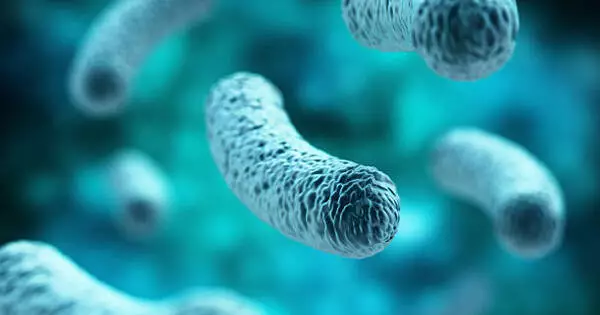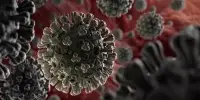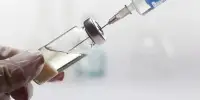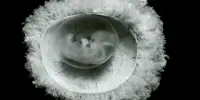Waste-eating bacteria use enzymes to break down complex carbons into simpler sugars, which can then be metabolized for energy. These enzymes are able to target specific types of complex carbohydrates, such as cellulose or chitin, and break them down into smaller subunits that can be transported into the bacterial cell for further processing. The process of breaking down complex carbohydrates is often carried out in stages, with different enzymes and pathways being utilized at each step to efficiently convert the complex substrate into usable energy.
Researchers have for the first time mapped the metabolic mechanisms of a Comamonas bacterium that digests chemicals from plastic and plant waste. This new knowledge has the potential to lead to novel biotechnology platforms that use bacteria to help recycle plastic waste.
Comamonas testosteroni, a common environmental bacterium, may one day serve as nature’s plastic recycling center. C. testosteroni, on the other hand, has a natural appetite for complex waste from plants and plastics, whereas most bacteria prefer sugars.
For the first time, researchers from Northwestern University have deciphered the metabolic mechanisms that allow C. testosteroni to digest the seemingly indigestible. This new knowledge has the potential to lead to novel biotechnology platforms that use bacteria to help recycle plastic waste.
The findings will appear in the journal Nature Chemical Biology.
Soil bacteria provide an untapped, underexplored, naturally occurring resource of biochemical reactions that could be exploited to help us deal with the accumulating waste on our planet. We discovered that C. testosteroni metabolism is regulated at multiple levels, all of which are integrated.
Ludmilla Aristilde
Comamonas species can be found almost anywhere, including soils and sewage sludge. C. testosteroni initially piqued the interest of researchers due to its natural ability to digest synthetic laundry detergents. Following further investigation, scientists discovered that this natural bacterium also degrades compounds derived from plastic and lignin (fibrous, woody waste from plants).
Despite the fact that other researchers have worked to engineer bacteria that can break down plastic waste, Aristilde believes that bacteria with natural abilities to digest plastics hold more promise for large-scale recycling applications.
“Soil bacteria provide an untapped, underexplored, naturally occurring resource of biochemical reactions that could be exploited to help us deal with the accumulating waste on our planet,” said Ludmilla Aristilde of Northwestern University. “We discovered that C. testosteroni metabolism is regulated at multiple levels, all of which are integrated. Microbiology has incredible power and could play an important role in establishing a circular economy.”
The study was led by Aristilde, an associate professor of civil and environmental engineering at Northwestern’s McCormick School of Engineering, and Ph.D. student Rebecca Wilkes, who is the paper’s first author. The study included collaborators from University of Chicago, Oak Ridge National Laboratory and Technical University of Denmark.
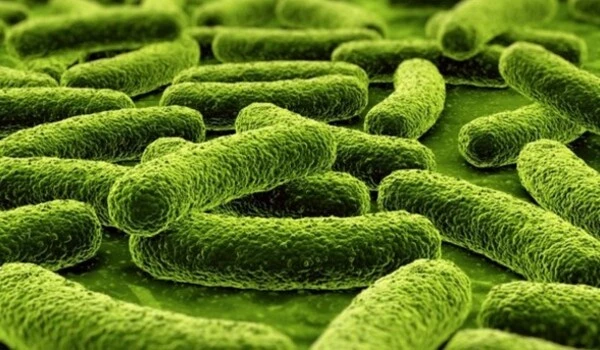
Kicking sugar
Because Escherichia Coli is the most well-studied bacterial model organism, it is used in the majority of projects to engineer bacteria. However, in its natural state, E. Coli readily consumes various forms of sugar. E. Coli will consume sugar as long as it is available, leaving the plastic chemicals behind.
“Engineering bacteria for various purposes is a time-consuming process,” Aristilde explained. “It is critical to note that C. testosteroni cannot use sugars at all. It has natural genetic limitations that prevent it from competing with sugars, making it an appealing platform.”
What C. testosteroni really wants, though, is a different source of carbon. And materials such as plastic and lignin contain compounds with a ring of tasty carbon atoms. While researchers have known that C. testosteroni can digest these compounds, Aristilde and her team wanted to know how.
“These are carbon compounds with complex bond chemistry,” Aristilde said. “Many bacteria have great difficulty breaking them apart.”
Combining different ‘omics’
To study how C. testosteroni degrades these complex forms of carbon, Aristilde and her team combined multiple forms of “omics”-based analyses: transcriptomics (study of RNA molecules); proteomics (study of proteins); metabolomics (study of metabolites); and fluxomics (study of metabolic reactions). Comprehensive “multi-omics” studies are massive undertakings that require a variety of different techniques. Aristilde leads one of few labs that carries out such comprehensive studies.
Aristilde and her colleagues mapped the metabolic pathways that bacteria use to degrade plastic and lignin compounds into carbons for food by examining the relationship between transcriptomics, proteomics, metabolomics, and fluxomics. Finally, the researchers discovered that the bacteria break down the carbon ring in each compound first. The bacteria continue to degrade the ring into shorter fragments after breaking it open into a linear structure.
“We started with a plastic or lignin compound that has seven or eight carbons linked together through a core six-carbon circular shape that forms the benzene ring,” Aristilde explained. “Then, they break that apart into shorter chains that have three or four carbons. In the process, the bacteria feed those broken-down products into their natural metabolism, so they can make amino acids or DNA to help them grow.”
Upcycling plastic waste
Aristilde also discovered that C. testosteroni can direct carbon via various metabolic pathways. These pathways can result in useful by-products that can be used for industrially relevant polymers like plastics. Aristilde and her colleagues are currently working on a project to better understand the metabolism that drives polymer biosynthesis.
“These Comamonas species have the potential to produce several biotechnologically relevant polymers,” Aristilde said. “This could lead to the development of new platforms for the production of plastic, reducing our reliance on petroleum chemicals. One of my lab’s main goals is to use renewable resources, such as recycling nutrients from waste and converting waste into plastic. Then we won’t have to keep extracting petroleum chemicals, for example, to make plastics.”
